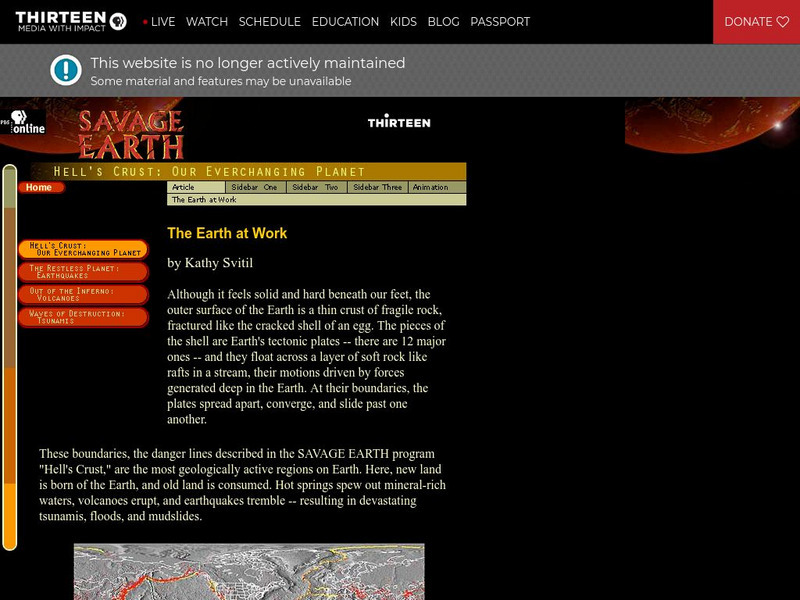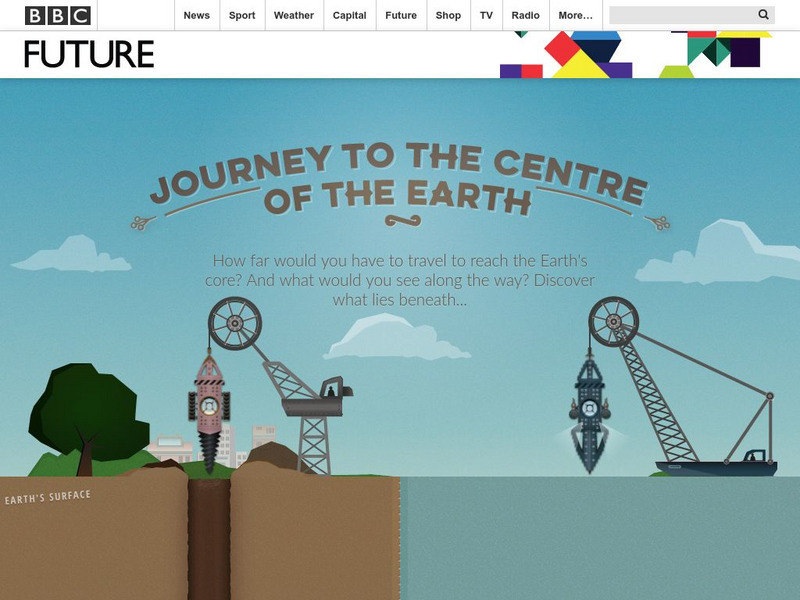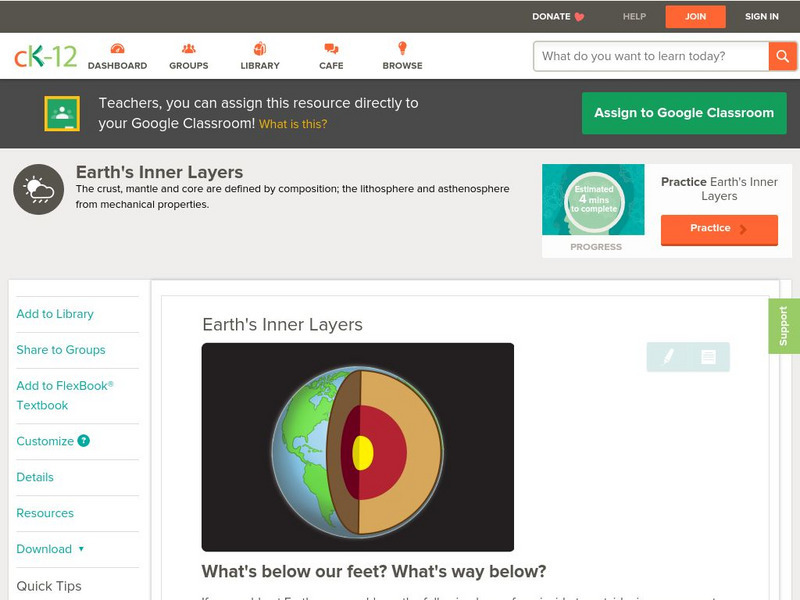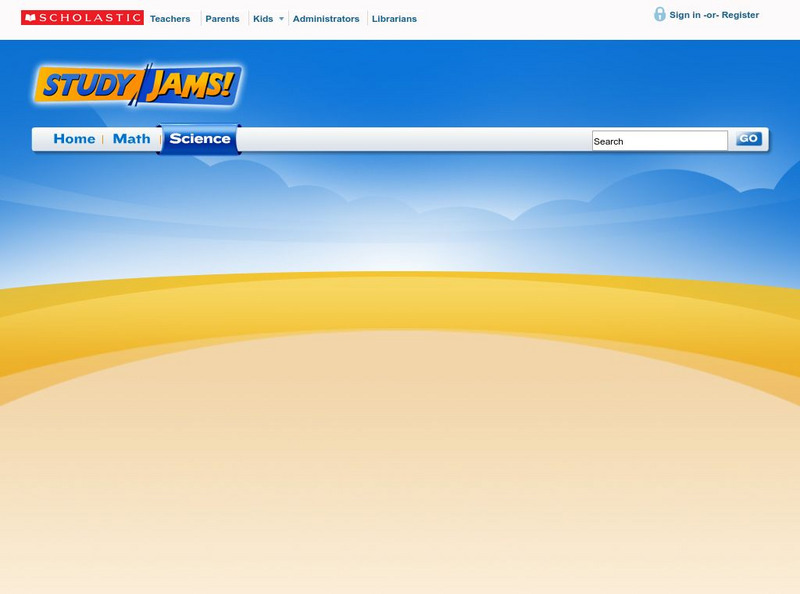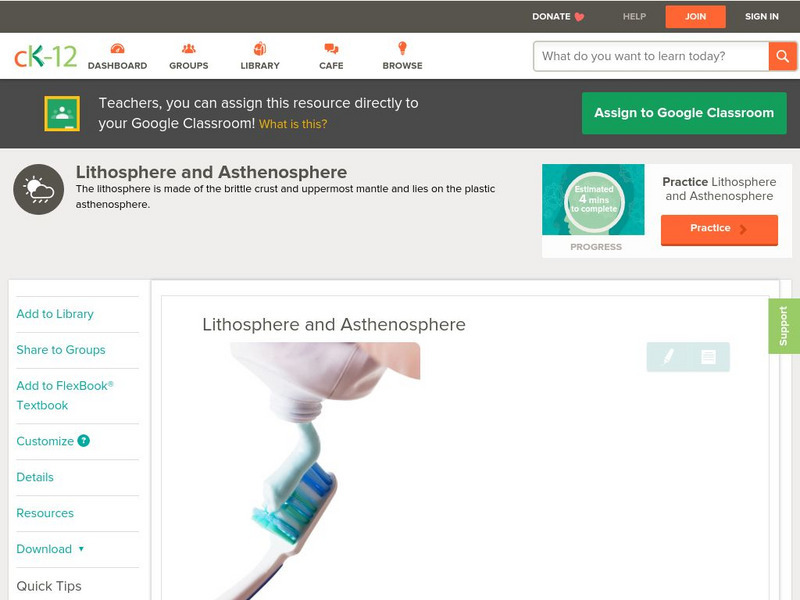Hi, what do you want to do?
PBS
Wnet: Thirteen: The Earth at Work
This site from PBS provides a description of the mechanisms behind the plate movements, types of movements, and the resulting earthquakes, faults, and images and animations of several of the topics presented.
Energy4Me
Energy4me: Name That Tune
Students will learn that scientists use seismic technology (sound waves) to map patterns of rock formations below the surface of the earth and that different types of rocks affect sound waves.
Vision Learning
Visionlearning: Earth Science: Earth's Atmosphere: Composition and Structure
Instructional module focusing on Earth's atmosphere. Discussion includes major components, layers, air pressure, and scientific monitoring of the atmosphere. Site also includes an interactive practice quiz and links relating to the topic.
Annenberg Foundation
Annenberg Learner: Essential Science for Teachers: Earth and Space 3
Visit an active volcano site to find out the connection between the movement of the Earth's plates and the processes deep within the Earth's interior. [58:23]
BBC
Bbc Future: Journey to the Centre of the Earth
Explore deep underground and deep in the ocean to discover what lies beneath the surface. Don't stop until the final destination: the core of the Earth.
PBS
Pbs Learning Media: Characteristics of the Sun
This video segment adapted from NASA describes the basic characteristics of our star, the Sun. Includes background reading material and discussion questions. Video length: 1 min. 28 sec.
CK-12 Foundation
Ck 12: Earth Science: Earth's Inner Layers
[Free Registration/Login may be required to access all resource tools.] Identifies and describes the two internal layers of Earth.
CK-12 Foundation
Ck 12: Earth Science: Earth's Layers Study Guide
This comprehensive study guide covers the main terms and concepts needed for an earth science unit on the earth's layers. Review questions are included at the bottom of the study guide.
Scholastic
Scholastic: Study Jams! Science: Weather & Climate: Earth's Atmosphere
A video and a short multiple-choice quiz on the composition of and the layers in Earth's atmosphere.
American Museum of Natural History
American Museum of Natural History: O Logy: Stuff to Do: Edible Earth
Take a look at the layers that make up our Earth: inner core, outer core, mantle, and crust. Then have fun making a model of the Earth's interior that you can eat up.
The Franklin Institute
The Franklin Institute: Land Mass Formation
The Franklin Institute has provided a demonstration that theorizes how the earth's crust was formed. This is a lesson plan that needs only a few materials.
Science Struck
Science Struck: Facts About the Atmosphere Layers
Provides information about the five layers of Earth's atmosphere. Also discusses the satellites that orbit the Earth in the atmosphere.
CK-12 Foundation
Ck 12: Earth Science: Temperature of the Atmosphere
[Free Registration/Login may be required to access all resource tools.] How different temperature gradients separate the atmosphere into distinct layers.
CK-12 Foundation
Ck 12: Earth Science: Lithosphere and Asthenosphere
[Free Registration/Login may be required to access all resource tools.] The lithosphere is made of the brittle crust and uppermost mantle and lies on the plastic asthenosphere. Read about the properties of the lithosphere and asthenosphere.
Khan Academy
Khan Academy: What Is the Biosphere?
This article explains that as our knowledge of life on the planet evolves, we've come to use the word biosphere as a way of explaining the entire intertwined network of life on Earth. This concept combines an understanding of geology,...
Other popular searches
- Layers of the Earth
- Layer of the Earth
- All Layers of the Earth
- 4 Layers of the Earth
- Science Layers of the Earth
- Three Layers of the Earth
- Layers of the Earth Worksheet
- Model of the Earth's Layers
- Layers of the Earth Foldable
- Layers of the Earth Quiz





